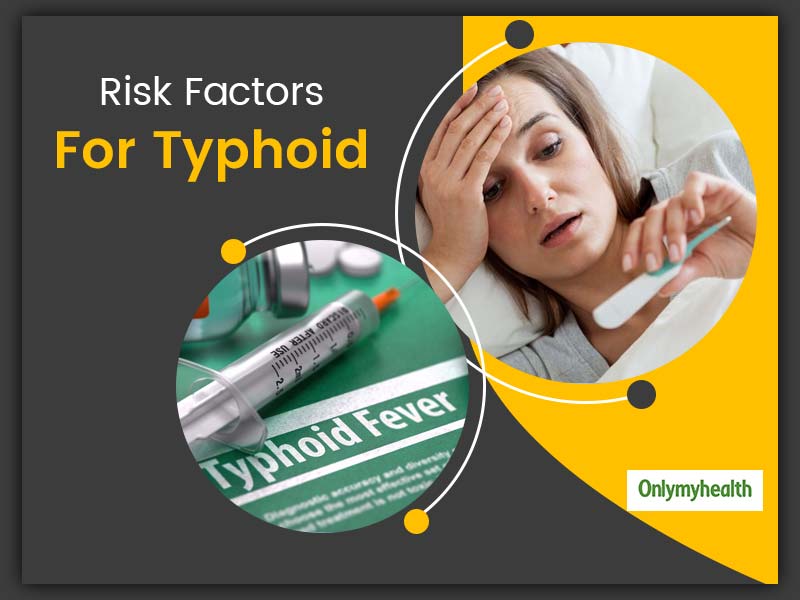
Drinking contaminated water and eating unhygienic food are not the only risk factors that cause typhoid. There are many others in conjunction with these that may make you a victim of typhoid. Typhoid still is a worldwide threat that affects developing nations that most. This is because of poor sanitation and hygiene conditions there which makes the citizens an easy target for typhoid. It is very important to be informed about the potential risk factors of typhoid.
Table of Content:-
Risk factors for Typhoid
Here are some common risk factors for typhoid that you need to know about and avoid.
Poor Hygiene Habits
Hygiene plays a very important role in preventing a lot of diseases including typhoid. Living in a clean and hygienic place keeps you safe from viruses and bacteria that cause typhoid. Note these warning signs of typhoid.
Consuming contaminated raw fruits and vegetables
There are many places where vegetables and fruits are grown with sewage water! Sadly, most people do not know about the origin of these eatables and consume them. Sewage water has a lot of toxic and harmful chemicals along with bacteria that cause health problems. Since the majority of the people cannot afford organic vegetables owing to their price, they are forced to have contaminated foods.

Poor sanitation conditions
Just like hygiene, sanitation is also one major typhoid-causing factor. Exposure to contaminated environment and proximity to flying insects that can carry germs from faeces doubles up the risk of typhoid.
Coming in close contact with a person having typhoid
If you know someone who has or had typhoid recently, avoid getting close to him/her. This cuts down the risk of you contracting this serious disease. Though typhoid is not a communicable disease, the bacterial transmission is possible which is undeniably a risk factor.
Also Read: Learn About The Week By Week Symptoms of Typhoid
Travel to endemic areas

There are some parts of the world that are worst affected by typhoid. You can search for a detailed list on the Internet. If you are traveling to any of these places, make sure to take a medical kit with you. If possible, avoid travelling to these places especially in the peak season.
Crowded housing with shared toilets
If you live in a crowded housing society, you may get typhoid after coming in contact with an infected person. Also, most crowded housing has shared toilets and bathrooms. Imagine, one toilet and 100 users. You can estimate the risk yourself.
Also Read: Home Remedies To Cure Or Prevent Typhoid
Prolonged illness
Someone who is ailing with a prolonged illness is also at risk of typhoid since their immunity is very weak. Their immune system is unable to fight off the deadly viral or bacterial infection. Since their defense system is compromised, they are an easy target for almost all possible illnesses.
Having an Immunosuppressive illness
Immunosuppressive illness such as AIDS makes you susceptible to germ attack. The bacteria can target you very easily and give you typhoid.
Also Read: Risk Factors That Could Blow Up Typhoid To Another Level
Health care worker
We cannot overlook the fact that healthcare workers at the ones at the maximum risk of infections. Since they handle the patients day and night, it is easy for them to contract the same.

Other notable risk factors are:
- Region: If you live or travel to areas where typhoid fever is endemic you are at increased risk.
- Age: Children are at greater risk of contracting the disease. The symptoms are usually milder in children as compared to adults.
- Profession: You are at higher risk if you work as a clinical microbiologist and have to handle salmonella typhi bacteria.
- Contact: Being in close contact with a person who is infected or has recently been infected with typhoid fever increases your risk of contracting typhoid fever.
- Immunity: People with a weak immune system (weakened by medications such as corticosteroids or diseases such as HIV/AIDS) are at increased risk of typhoid fever.
- Food and water: Having food or water contaminated by sewage that contains S. Typhi.
(With inputs from Dr Poonam Sachdev, MD - Pediatrics, MBBS)
Read more articles on Other Diseases
How we keep this article up to date:
We work with experts and keep a close eye on the latest in health and wellness. Whenever there is a new research or helpful information, we update our articles with accurate and useful advice.
Current Version